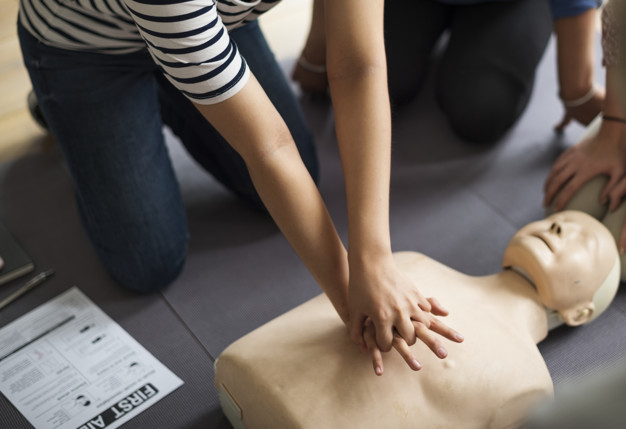
Having to perform cardiopulmonary resuscitation can be a stressful and adrenaline-inducing experience. Watching someone struggle for life in front of your eyes can trigger a fight or flight instinct, which challenges you to rise to the occasion. CPR has vital steps that must be understood and followed, but can be forgotten within an instant. Here are some common mistakes that people make that should be avoided at all costs.
1. Memorizing the steps of CPR without understanding the significance of the steps or why they’re doing them
When you’re learning CPR, it is easy to disregard the steps if you think you’ll never have to use them. One of the biggest mistakes someone taking CPR classes can make is to glaze over the steps without realizing their importance. Every step has a purpose and is vital in the process of saving someone’s life. Whether it’s keeping someone’s head back to encourage air flow or keeping adequate pressure and consistent counting, take the time to learn the steps and the reason for their importance.
2. Becoming so involved with the physical aspects of CPR that they forget to call 911
When having to perform CPR, you are faced with several challenges that must be addressed and fixed. One of them, of course, is to help the person who is struggling to breathe, and one of the others is to call for emergency assistance. When you’re too focused on making sure the victim can breathe, you are missing the key step of calling 911. This missed step can result in tragic consequences. However, it can easily be avoided by telling someone around you to call for assistance. If you’re by yourself, check the victim first before quickly dialing the number.
3. Rushing through the compressions because of stress or in an effort to make the process faster
The adrenaline coursing through your body makes you rush, making it easy to forget how to count compression consistently, evenly, and appropriately. The Red Cross advises that chest compression be carried out at 100 compressions per minute. To stay on track, it is commonly known to deliver compressions to the beat of “Staying Alive” by the Bee Gees. Compressions should always be done until the victim begins to show signs of life.
4. Forgetting their own safety
Coming across a victim who is unconscious and dying from lack of blood flow and oxygen circulation would likely cause the person who found them to disregard their surroundings and own safety. The first rule of CPR is making sure the scene is safe for you to perform CPR in. The victim is a priority, but if you get hurt and can’t even help yourself, how are you supposed to help them? Check the scene and maintain your safety, then ensure that the victim lives by carefully following through with the rest of the steps.
5. Forgetting to place and maintain the victim in the correct posture
Victim posture is extremely important in any live-saving procedure. In the case of CPR, the victim must be lying on their back with their head tilted back and chin lifted to ensure an open airway. If their airway isn’t open, then they won’t be receiving any air. This should be evident when the victim’s chest doesn’t rise after you initiate rescue breaths. Deliver rescue breaths and place your ear over their mouth to listen for breaths and watch the chest to see if it rises or falls. If it does nothing, readjust the victim for an open airway.
CPR is a serious procedure and should not be taken lightly. Learn the steps appropriately and seriously. Visit our website to sign up for CPR classes and learn life-saving techniques.


